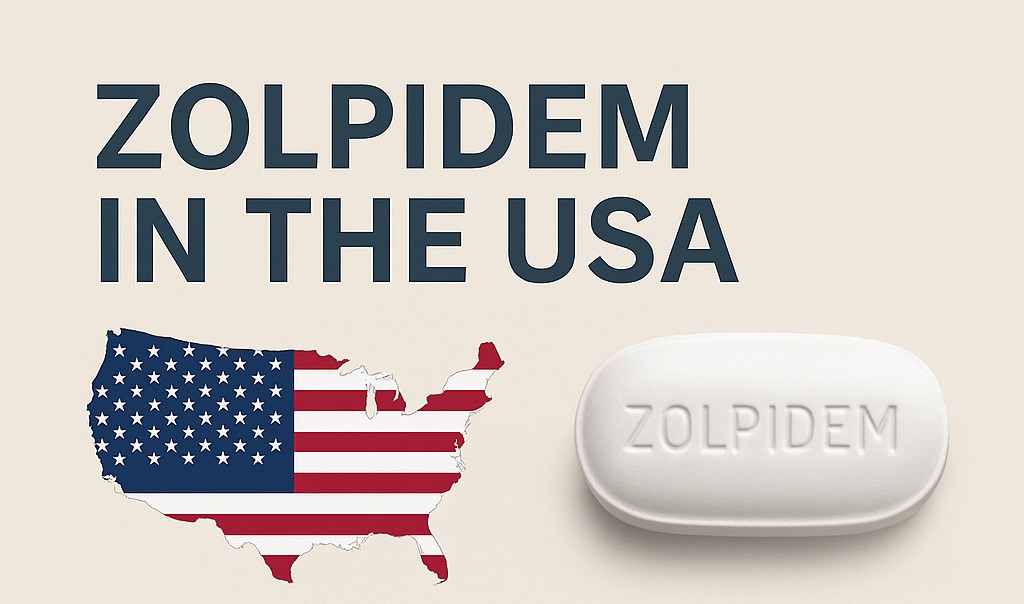Zolpidem in the USA, widely known under brand names such as Ambien, Edluar, and Zolpimist, is a sedative-hypnotic medication primarily prescribed for the short-term treatment of insomnia. Due to its psychoactive properties and potential for misuse, zolpidem is regulated under federal law in the United States.
Classification of Zolpidem in the USA
Zolpidem in the USA is designated as a Schedule IV controlled substance under the Controlled Substances Act (CSA). This classification—enforced by the Drug Enforcement Administration (DEA)—acknowledges that while zolpidem has accepted medical applications, it also presents a risk for dependence or abuse, albeit lower than Schedule III or II substances.
Being in Schedule IV means zolpidem prescriptions must follow certain legal rules:
- Only licensed medical practitioners can prescribe it.
- Prescriptions must be written and cannot be refilled more than five times within six months without a new prescription.
- Possession without a valid prescription is illegal and may result in criminal penalties.
Regulatory and Safety Measures
The FDA (Food and Drug Administration) has approved zolpidem for short-term use—typically no more than 4 weeks—due to concerns about tolerance, dependence, and complex sleep-related behaviors such as sleepwalking, sleep-driving, or eating while asleep.
To minimize risks, healthcare providers often prescribe lower doses, especially for women and elderly patients, who metabolize the drug more slowly. The FDA issued safety alerts requiring labeling changes to highlight these risks.
Legal Implications and Misuse
Although zolpidem in the USA is considered less addictive than benzodiazepines, its misuse has been documented, particularly in combination with alcohol or other CNS depressants. Individuals using zolpidem recreationally or without medical supervision may face legal consequences, including charges for possession or prescription fraud.
Additionally, drug-impaired driving under the influence of zolpidem can result in DUI charges, even with a prescription, if it impairs cognitive or motor function.
Alternatives of Zolpidem in the USA
Zolpidem (Ambien) is widely prescribed for short-term insomnia, but not all patients tolerate it well due to side effects such as memory disturbances, sleepwalking, or grogginess. Below are medically recognized alternatives grouped by type.
1. Zopiclone (Not FDA-approved, but eszopiclone is)
Prescription Alternatives
- Status in the U.S.: Zopiclone itself is not approved by the FDA. However, its active stereoisomer, Eszopiclone, is approved and marketed as Lunesta.
- How it works: Like zolpidem, eszopiclone is a non-benzodiazepine hypnotic acting on GABA-A receptors.
- Duration: Longer half-life (~6–8 hours), better for sleep maintenance.
- Schedule IV controlled substance.
2. Temazepam (Restoril)
- A benzodiazepine used for short-term insomnia treatment.
- Often prescribed when Z-drugs are not effective.
- May cause next-day sedation and dependency if used long term.
3. Trazodone
- Originally an antidepressant, now widely used off-label for insomnia.
- Non-addictive and helpful for patients with co-occurring depression or anxiety.
- Less risk of abuse than zolpidem or benzodiazepines.
4. Doxepin (Silenor)
- A tricyclic antidepressant in low-dose formulation for insomnia.
- Especially effective for sleep maintenance insomnia.
- Non-controlled, low abuse potential.
5. Ramelteon (Rozerem)
- Melatonin receptor agonist (MT1 and MT2).
- Promotes natural sleep onset without risk of dependency.
- Ideal for chronic insomnia and elderly populations.
6. Suvorexant (Belsomra) / Lemborexant (Dayvigo)
- Orexin receptor antagonists; work by reducing wakefulness signals in the brain.
- FDA-approved for both sleep onset and maintenance issues.
- Lower abuse risk than GABAergic drugs but still Schedule IV.
Over-the-Counter and Natural Alternatives of Zolpidem in the USA
1. Melatonin Supplements
- Hormone that regulates the sleep-wake cycle.
- Effective for circadian rhythm disorders, jet lag, and mild insomnia.
- Available OTC, non-habit forming.
2. Diphenhydramine / Doxylamine
- Antihistamines found in OTC sleep aids (e.g., Unisom, Tylenol PM).
- Can cause next-day grogginess; not suitable for long-term use.
3. Valerian Root, Magnesium, L-Theanine
- Natural supplements with some evidence for mild sedative effects.
- Less potent but may benefit patients with light insomnia or stress-related sleep issues.
Non-Pharmacological Alternatives
- Cognitive Behavioral Therapy for Insomnia (CBT-I): Gold standard for chronic insomnia.
- Sleep hygiene education
- Mindfulness and relaxation techniques
Summary Table
| Medication | Type | Controlled? | Best For |
|---|---|---|---|
| Eszopiclone | Z-drug | Schedule IV | Sleep maintenance |
| Temazepam | Benzodiazepine | Schedule IV | Short-term, severe insomnia |
| Trazodone | Antidepressant (off-label) | No | Comorbid depression/anxiety |
| Doxepin | Tricyclic antidepressant | No | Middle-of-the-night waking |
| Ramelteon | Melatonin receptor agonist | No | Elderly, chronic insomnia |
| Suvorexant | Orexin receptor antagonist | Schedule IV | Sleep onset and maintenance |
Conclusion
Zolpidem holds an important place in sleep medicine, but its legal use in the U.S. is tightly regulated. As a Schedule IV medication, it offers therapeutic benefits when used responsibly, but patients and providers must be aware of the legal and health risks associated with inappropriate use or diversion.
